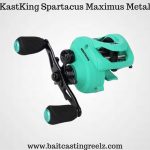Introduction
Welcome to our comprehensive guide on how to jig fish! Whether you’re a beginner looking to learn the basics or an experienced angler wanting to refine your techniques, this article has got you covered. Jig fishing is a popular method used by anglers worldwide to target a wide variety of fish species. In this guide, we will dive deep into the world of jig fishing, providing you with valuable insights, tips, and tricks to help you become a successful jig angler. So, let’s get started and unravel the secrets of this exciting fishing technique!
The Basics of Jig Fishing
Jig fishing is a versatile technique that involves using a weighted jig lure to mimic the movements of prey fish and entice predatory fish to strike. The jig lure consists of a lead or tungsten head, a hook, and a skirt made of feathers, rubber, or silicone. Anglers impart action to the jig lure by lifting, dropping, or jerking the rod, creating an enticing motion that attracts fish.
Choosing the Right Jig Lure
When it comes to jig fishing, selecting the right lure is crucial for success. There are various factors to consider when choosing a jig lure, including:
- Weight: The weight of the jig lure depends on the fishing conditions and the depth at which you want to fish. Heavier jigs are suitable for deeper waters and stronger currents, while lighter jigs work well in shallower areas.
- Color: The color of the jig lure should imitate the natural prey fish in the water. Common colors include white, black, green, brown, and chartreuse. Experiment with different colors to determine which ones work best in your fishing location.
- Skirt Material: Jig skirts are available in a variety of materials, each with its own action and appeal. Rubber and silicone skirts provide a lifelike movement, while feather skirts create a more subtle and natural appearance.
Equipment for Jig Fishing
To effectively jig fish, you’ll need the following equipment:
- Rod: Choose a medium to medium-heavy spinning or baitcasting rod with a sensitive tip and enough backbone to handle larger fish.
- Reel: Opt for a reel that matches the rod and has a smooth drag system. Spinning reels are more popular for jig fishing due to their versatility and ease of use.
- Line: Use a braided fishing line with a high-pound test for jig fishing. Braided lines offer excellent sensitivity, strength, and minimal stretch, allowing you to detect subtle bites and handle powerful fish.
Techniques for Jig Fishing
Now that you have the basic equipment and lure knowledge, let’s explore some popular jig fishing techniques:
- Pitching and Flipping: This technique involves precisely placing the jig lure in targeted areas such as docks, brush piles, or other structures where fish may be hiding. It requires accurate casting and short-distance presentations.
- Swimming Retrieve: With this technique, you retrieve the jig lure steadily through the water column, imitating a swimming prey fish. Vary the speed and depth to entice strikes from different species.
- Hopping and Dragging: By lifting the rod tip and then dropping it, you create a hopping motion that mimics a wounded or fleeing baitfish. Combine this action with occasional pauses to attract fish.
- Vertical Jigging: This technique is ideal for fishing in deep water or vertical structures like bridge pilings or drop-offs. Drop the jig lure to the desired depth and then lift it with an upward motion before allowing it to descend again.
FAQs about Jig Fishing
Q: How deep should I fish when jig fishing?
A: The depth at which you should fish depends on the target species and the specific fishing location. It’s essential to experiment and adjust your depth until you start getting bites.
Q: Can I use jig fishing in saltwater?
A: Absolutely! Jig fishing is a versatile technique that can be applied in both freshwater and saltwater environments. Just make sure to use saltwater-specific jigs and gear to withstand the harsh conditions.
Q: What are some common mistakes to avoid when jig fishing?
A: One common mistake is using a jig that is too heavy or too light for the fishing conditions. Additionally, not paying attention to subtle strikes or failing to vary your jigging techniques can also lead to missed opportunities.
Q: Which fish species can I target with jig fishing?
A: Jig fishing can be effective for a wide range of fish species, including bass, walleye, pike, trout, snapper, grouper, and many others. Research your target species to understand their preferences and behaviors.
Q: How do I detect a bite when jig fishing?
A: Detecting bites while jig fishing requires sensitivity and practice. Pay attention to any change in the line tension, movement, or a slight tap on the rod tip. Sometimes, you may feel a subtle “thump” or see the line twitch.
Q: Are there different jig styles for different fishing techniques?
A: Yes, there are various jig styles available for different fishing techniques. Football jigs, swim jigs, flipping jigs, and finesse jigs are just a few examples. Each style is designed to excel in specific situations.
Conclusion
Congratulations! You’ve now learned the ins and outs of jig fishing. Armed with this knowledge, you can head out to the water with confidence and start honing your skills as a jig angler. Remember, practice makes perfect, so be patient and persistent. Whether you’re targeting bass in freshwater lakes or chasing snapper in saltwater, jig fishing offers a thrilling and rewarding experience. So, grab your gear, tie on a jig, and get ready to reel in some exciting catches!

